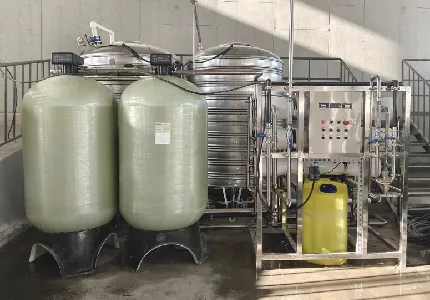loading...
- No. 9, Xingyuan South Street, Dongwaihuan Road, Zaoqiang County, Hengshui, Hebei, China
- admin@zjcomposites.com
- +86 15097380338
- Welcome to visit our website!
grp sandwich panels
Understanding GRP Sandwich Panels A Comprehensive Overview
In the realm of modern construction and manufacturing, GRP (Glass Reinforced Plastic) sandwich panels have emerged as a popular choice for a variety of applications. These innovative panels combine durability, insulation, and aesthetic appeal, making them suitable for industrial, commercial, and even residential uses. This article will provide a comprehensive overview of GRP sandwich panels, their composition, benefits, applications, and considerations for use.
Composition of GRP Sandwich Panels
GRP sandwich panels are structured materials composed of three layers two outer skins and a core material. The outer layers are typically made of glass reinforced plastic, which gives the panels their remarkable strength and resistance to environmental factors. The core is often made of lightweight materials such as foam, honeycomb structures, or other insulating materials. This unique composition offers a balance of structural integrity and thermal insulation, resulting in an efficient building material.
Key Benefits
1. Strength and Durability One of the most significant advantages of GRP sandwich panels is their strength. The glass fiber reinforcement provides a high degree of rigidity and resistance to impact, making them suitable for harsh environments.
2. Thermal Insulation The core material used in GRP sandwich panels typically has excellent insulating properties. This characteristic significantly contributes to energy efficiency in buildings, as it helps to regulate indoor temperatures and reduce heating and cooling costs.
3. Lightweight Compared to traditional building materials, such as concrete or brick, GRP sandwich panels are relatively lightweight. This makes them easy to handle and transport, reducing labor costs and simplifying the construction process.
4. Aesthetic Flexibility GRP sandwich panels can be designed in various colors and finishes, offering an appealing aesthetic that can complement different architectural styles. Manufacturers can customize panels to meet specific design needs, allowing architects and builders to maintain creative freedom.
5. Corrosion Resistance The glass fiber and plastic composition provides excellent resistance to chemicals and moisture, making GRP sandwich panels ideal for use in environments where corrosion could be a concern, such as industrial facilities, food processing plants, and coastal structures.
Applications of GRP Sandwich Panels
The versatility of GRP sandwich panels means they can be utilized in a wide range of applications
. Some common uses includegrp sandwich panels

- Industrial Buildings Many manufacturing facilities and warehouses utilize GRP panels for roofing and wall systems due to their strength and insulating properties.
- Cold Storage Facilities The thermal insulation capabilities of GRP sandwich panels make them an excellent choice for cold storage units, helping to maintain consistent temperatures.
- Clean Rooms In pharmaceutical and biotechnology sectors, GRP sandwich panels are used for cleanrooms as they are easy to clean and resistant to contaminants.
- Modular Buildings GRP panels are ideal for pre-fabricated and modular construction, offering quick assembly and flexibility in design.
- Transportation In the transportation sector, these panels are used in trucks, trailers, and buses, providing lightweight yet durable surfaces.
Considerations for Use
While GRP sandwich panels offer numerous benefits, there are some factors to consider before deciding to use them in a project
- Cost Although the long-term savings in energy efficiency can offset initial costs, GRP panels may require a higher upfront investment compared to traditional building materials.
- UV Protection Over time, prolonged exposure to ultraviolet rays can degrade the panels’ surface. It is crucial to ensure they are treated or coated to resist UV damage, especially in outdoor applications.
- Installation Expertise Proper installation is key to maximizing the performance of GRP sandwich panels. Hiring professionals who are familiar with the material is important to avoid issues that can arise during installation.
Conclusion
In conclusion, GRP sandwich panels represent a remarkable evolution in building materials, offering a compelling combination of strength, insulation, lightweight properties, and aesthetic flexibility. As industries continue to embrace innovative solutions for construction challenges, GRP sandwich panels stand out as a versatile and efficient choice. By understanding their composition, advantages, applications, and installation considerations, builders and architects can make informed decisions that contribute to successful and sustainable construction projects.
-
Premium FRP Handrail for All ApplicationsNewsAug.29,2025
-
Low Maintenance FRP Mini Mesh Grating ProductsNewsAug.29,2025
-
Innovative FRP Square Tubes for Modern Industrial SolutionsNewsAug.29,2025
-
FRP Water Storage Tanks Wholesale Solutions for Bulk BuyersNewsAug.29,2025
-
FRP Molded Grating Solutions for Diverse Industrial ApplicationsNewsAug.29,2025
-
Construction Advancements Through FRP Pultruded ProfilesNewsAug.29,2025
-
Why Choose FRP Railings, Guardrails, and Handrail Systems?NewsAug.29,2025
